.
http://www.voltairenet.org/article162599.htmlIl segreto di Guantanamodi Thierry Meyssan*
Pensate di essere informati su ciò che è accaduto a Guantanamo e vi stupite che il presidente Obama non può chiudere questo centro di tortura. Vi sbagliate. Ignorate il vero scopo di questo centro e ciò che lo rende indispensabile all’attuale amministrazione. Attenzione: se desiderate continuare a pensare che abbiamo valori comuni con gli Stati Uniti e dobbiamo essere alleati con loro, non leggete quest’articolo.
28 ottobre 2009
Mosca (Russia)
Tutti ricordano le foto delle torture che circolano su Internet. Esse sono state presentate come trofei di guerra da qualche GI. Tuttavia, i media mainstream in grado di verificarne l’autenticità, non osava riprodurle. Nel 2004 la CBS dedicato vi ha consacrato una reportage. Questo è stato il segnale del movimento generale per esporre il maltrattamento degli iracheni. La prigione di Abu Ghraib dimostrava che la presunta guerra contro la dittatura di Saddam Hussein era in realtà una guerra di occupazione come le altre, con lo stesso corteo di crimini. Non sorprende che Washington abbia assicurato che gli abusi furono perpetrati all’insaputa dei comandi, da pochi individui insignificanti descritti come "mele marce".
Alcuni soldati sono stati arrestati e processati per esempio. Il caso è stato chiuso fino alla rivelazione successiva. Allo stesso tempo, la CIA e il Pentagono stavano preparando l’opinione pubblica, negli Stati Uniti e negli Stati alleati, a modificare i propri valori morali. L’Agenzia aveva nominato un agente di collegamento con Hollywood, il colonnello Brandon Chase (cugino di Tommy Lee Jones) e ingaggiato famosi scrittori (come Tom Clamcy) e sceneggiatori per scrivere nuovi film e serie televisive. L’obiettivo: stigmatizzare la cultura musulmana e banalizzare la tortura nella lotta contro il terrorismo.
Ad esempio, le avventure dell’agente Jack Bauer nella serie 24 sono state ampiamente sovvenzionate dall’agenzia, affinché in ogni stagione spingesse un po’ oltre i limiti dell’accettabilità. Nel primi episodi, l’eroe intimidisce gli indagati per estrarne le informazioni. Negli episodi successivi, tutti i personaggi si sospettano e si torturano a vicenda, con sempre meno stati d’animo e maggiore certezza nel dovere da svolgere. Nell’immaginario collettivo, secoli di umanesimo sono stati spazzati via e una nuova barbarie si imponeva. Il columnist del Washington Post, Charles Krauthammer (che è anche psichiatra) poteva fare dell’uso della tortura un "imperativo morale" (sic), in questi tempi difficili di guerra al terrorismo.
Poi è arrivata la conferma, da parte dell’inchiesta del senatore svizzero Dick Marty, al Consiglio d’Europa, che la CIA ha sequestrato migliaia di persone in tutto il mondo, di cui decine o persino centinaia, nel territorio dell’Unione europea. Poi è arrivata la valanga di prove sui crimini commessi nelle prigioni di Guantanamo Bay (Caraibi) e di Bagram (Afghanistan).
Perfettamente condizionata, l’opinione pubblica degli Stati membri della NATO ha accettato la spiegazione che gli si è data, e che era coerente con gli intrighi romantici da cui è stata sommersa: il risparmio di vite innocenti, il ricorso di Washington a pratiche illegali, il sequestro di sospetti, che poi si ha fatto parlare con modi che la morale riprova, ma che l’efficienza comanda.
È a partire da questa narrazione semplicistica, che il candidato Barack Obama si oppose all’amministrazione Bush uscente. Eresse a misure chiave del suo mandato la proibizione della tortura e la chiusura delle prigioni segrete. Dopo la sua elezione, durante il periodo di transizione, era circondato da avvocati di altissimo livello, per elaborare una strategia per chiudere questo sinistro episodio. Una volta installato alla Casa Bianca, ha consacrato i suoi primi decreti presidenziali nell’attuare gli impegni assunti in tal senso. Questo desiderio ha conquistato l’opinione pubblica internazionale, ha suscitato una simpatia immensa per il nuovo presidente e riabilitato l’immagine degli Stati Uniti nel mondo.
Tranne che, a un anno dall’elezione di Barack Obama, se centinaia di singoli casi sono stati risolti, non è cambiato nulla nel merito. Guantanamo è lì e non sarà chiusa immediatamente. Le associazioni di difesa dei diritti umani sono chiare: la violenza contro i detenuti sono peggiorate. Interrogato al riguardo, il vice-presidente Joe Biden ha detto che più si avanzava in questo dossier, più capiva che finora non era a conoscenza di molti aspetti. Poi, enigmatico, ha avvertito la stampa, assicurando che non si dovrebbe aprire il vaso di Pandora. Da parte sua, Greg Craig, consulente della Casa Bianca ha voluto dare le dimissioni, non perché crede di aver fallito nella sua missione di chiudere il centro, ma perché ora crede che gli sia stato affidato un compito impossibile.
Perché il Presidente degli Stati Uniti non riesce a farsi obbedire? Se uno ha già detto tutto ciò che riguarda gli abusi dell’era Bush, perché parlare di un vaso di Pandora e che se ne ha paura?
In realtà, il sistema è più vasto. Non si limita solo a pochi rapimenti e a una prigione. Soprattutto, il suo scopo è radicalmente diverso da quello che la CIA e il Pentagono fanno credere. Prima di iniziare la discesa agli inferi, si dovrebbe far piazza pulita della confusione.
Contro-insurrezione
Ciò che è stato fatto dall’esercito ad Abu Ghraib, almeno inizialmente, non aveva nulla a che fare con ciò che ha sperimentato la Marina a Guantanamo e nelle altre prigioni segrete. Si trattava semplicemente di ciò che fanno tutti gli eserciti del mondo, quando diventano una polizia e affrontano una popolazione ostile. Essi la dominano terrorizzandola. In questo caso, le forze della coalizione hanno riprodotto i crimini commessi durante la Battaglia di Algeri, da parte dei francesi, contro gli algerini, che ancora chiamavano loro "compatrioti". Il Pentagono, ha richiamato il generale francese in pensione Paul Aussaresses, specialista della “contro-insurrezione", per avere un briefing con gli ufficiali superiori. Nel corso della sua lunga carriera, Aussaresses ha accompagnato gli Stati Uniti ovunque essi hanno scatenato "guerre a bassa intensità”, soprattutto nel Sud-Est asiatico e in America Latina.
Alla fine della seconda guerra mondiale, gli Stati Uniti installarono due centri di formazione in queste tecniche, il Political Warfare Cadres Academy (Taiwan) e la Scuola delle Americhe (Panama). Dei corsi di tortura venivano insegnati ai responsabile della repressione nelle dittature asiatiche e Latinoamericane.
Negli anni ‘60-‘70, il dispositivo è stato coordinato all’interno della World Anti-Communist League, in cui partecipavano i capi di Stato in questione [1]. Questa politica prese un’ampiezza considerevole con le operazioni Phoenix in Vietnam (neutralizzazione di 80000 persone sospettate di appartenere ai Viet Cong) [2] e Condor, in America Latina (neutralizzare gli oppositori politici di tutto il continente) [3]. Il piano si articolava nella pulizia delle aree ribelli da parte degli squadroni della morte, cosa che è stata replicata anche in Iraq, con l’Operazione Iron Hammer [4].
L’unica novità è la distribuzione ai GI di un classico della letteratura coloniale, The Arab Mind, dell’antropologo Raphael Patai, con una prefazione del colonnello Norvell B. Atkins, direttore del John F. Kennedy Special Warfare School, nuova denominazione della sinistra School of Americas, quando fu trasferita a Fort Bragg (North Carolina) [5]. Questo libro, che si presenta con tono scientifico dei pregiudizi stupidi sugli “arabi" in generale, comprende un famoso capitolo sui tabù sessuali, che ha ispirato gli allestimenti di Abu Ghraib.
Le torture commesse in Iraq non sono casi isolati, come pretendeva l’amministrazione Bush, ma sono parte di una strategia di contro-insurrezione. L’unico modo per fermarla, non è condannarla moralmente, ma è quello di risolvere la situazione politica. Ora Barack Obama continua a ritardare il ritiro delle forze straniere dall’Iraq.
Gli esperimenti del professor Biderman
E’ in tutt’altra prospettiva che uno psichiatra dell’aviazione, il Dr. Albert D. Biderman, ha studiato il condizionamento dei prigionieri di guerra statunitensi in Corea del Nord.
Molto prima di Mao e del comunismo, i cinesi avevano sviluppato metodi sofisticati per spezzare la volontà di un detenuto e d’inculcare una confessione. Li avevano usati durante la guerra di Corea e ottennero alcuni risultati: prigionieri di guerra degli Stati Uniti confessavano con convinzione, alla stampa, dei crimini che forse non avevano commesso. Biderman ha presentato i primi risultati nel corso di un’audizione al Senato, il 19 giugno 1956, e presso l’Accademia di Medicina di New York, l’anno successivo (vedi documenti scaricabili qui di seguito). Egli distingue cinque fasi attraverso cui passano i "soggetti".
1. In primo luogo il detenuto rifiuta di cooperare e si barrica nel silenzio.
2. Attraverso una miscela di brutalità e di gentilezza, si può passare a una seconda fase, dove saranno spinti a difendersi dalle accuse.
3. Poi, il prigioniero comincia a collaborare. Egli continua a proclamare la sua innocenza, ma cerca di soddisfare i suoi interroganti, riconoscendo che egli può aver commesso un errore involontario, accidentalmente o inavvertitamente.
4. Quando attraversa la quarta fase, il prigioniero è completamente screditato ai suoi stessi occhi. Continua a negare ciò di cui è accusato, ma confessa la sua natura criminale.
5 . Alla fine del processo, l’imputato ammette di essere l’autore delle accuse che gli si rivolgono. Inventa anche ulteriori dettagli per incolparsi e richiede la sua punizione.
Biderman esaminò anche le tecniche utilizzate dagli aguzzini per gestire i prigionieri cinesi: l’isolamento, la monopolizzazione della percezione sensoriale, la fatica, le minacce, i premi, le dimostrazioni di potenza dei carcerieri, il peggioramento delle condizioni di vita, la costrizione. La violenza fisica è secondaria, la violenza psicologica è totale e permanente.
Il lavoro di Biderman sul "lavaggio del cervello" ha acquisito una dimensione mitica. I militari Usa temevano che i loro uomini potessero essere restituiti dal nemico, condizionati a non dire qualsiasi cosa e, forse, a fare qualsiasi cosa. Hanno progettato un programma di addestramento dei piloti da caccia, in modo che essi diventassero refrattari a questa forma di tortura e non potessero essere utilizzati dal nemico, se fossero stati catturati. Questo addestramento si chiamava SERE, che significa Sopravvivenza, Evasione, Resistenza, Fuga (Survival, Evasion, Resistance, Escape). Inizialmente il corso era dedicato alla Scuola delle Americhe, fu poi esteso ad altre categorie del personale militare e fu diffuso presso diverse basi. Inoltre, l’addestramento di questa natura fu stabilito in ogni esercito membro della NATO.
Quello che l’amministrazione Bush ha deciso, dopo l’invasione dell’Afghanistan, fu quello di utilizzare queste tecniche per ottenere le confessioni dai prigionieri che giustificassero, a posteriori, il coinvolgimento dell’Afghanistan negli attentati dell’11 settembre, convalidando la versione ufficiale degli attentati.
Nuove strutture furono costruite nella base navale di Guantanamo e degli esperimenti vi venivano condotti. La teoria di Albert Biderman fu completata da uno psicologo civile, il professor Martin Seligman. Si tratta di un volto noto, poiché è stato il Presidente della American Psychological Association.
Seligman ha mostrato un limite della teoria dei riflessi condizionati di Ivan Pavlov. Si mette un cane in una gabbia, il cui pavimento è diviso in due parti. Si elettrifica, in modo casuale, ora un settore, ora l’altro. L’animale salta da un posto all’altro per proteggersi - finora, niente di sorprendente. Poi si accelerano le cose e, a volte, si elettrifica l’intera gabbia. L’animale si rende conto che non può sfuggire e che i suoi sforzi sono inutili.
Ben presto si arrende, si sdraia a terra ed entra in un secondo stato, che gli permette di sopportare passivamente la sofferenza. Si apre quindi la gabbia. Sorpresa: l’animale non fugge. Nello stato mentale in cui è posto, non è più in grado di resistere. Si abitua a sopportare il dolore.
La US Navy ha istituito un gruppo medico d’assalto. Che fece venire a Guantanamo il professor Seligman. Questo professionista è una star, noto per il suo lavoro sulla depressione. I suoi libri sull’ottimismo e la fiducia sono dei best seller in tutto il mondo. E lui che ha supervisionato gli esperimenti su cavie umane.
Alcuni prigionieri, sottoposti a terribili torture, finivano spontaneamente per mettersi da soli in questo stato psicologico, permettendogli di sopportare il dolore, ma privandoli di ogni resistenza. Manipolandoli così, si arriva rapidamente alla fase 3 del processo Biderman. Sempre basandosi sul lavoro di Biderman, i torturatori americani, guidati dal professor Seligman, hanno fatto esperimenti ed hanno migliorato tutte le tecniche coercitive.
Per fare questo, è stato sviluppato un protocollo scientifico che si basa sulla misurazione delle fluttuazioni ormonali. Un laboratorio medico è stato installato a Guantanamo. Campioni di saliva e del sangue vengono prelevati a intervalli regolari dalle cavie per valutarne le reazioni.
I torturatori hanno reso più sofisticati i loro crimini. Ad esempio, nel programma SERE, hanno monopolizzato con la musica stressante la percezione sensoriale, per impedire al prigioniero di dormire. Hanno ottenuto risultati migliori trasmettendo grida di bambini inconsolabili per giorni e giorni. Oppure, hanno mostrato tutta la potenza dei rapitori con i pestaggi.
A Guantanamo, hanno creato la Forza di reazione immediata. Questo è un gruppo di punizione dei prigionieri. Quando questa unità entra in azione, i suoi membri sono rivestiti di un’armatura di protezione, tipo Robocop. Estraggono il prigioniero della sua gabbia e lo mettono in una stanza le cui pareti sono imbottite e rivestite in compensato. Gettano la cavia contro il muro, per fratturarli, ma il legno compensato smorza parzialmente lo shock, così da inebetirli, ma le sue ossa non vengono rotte.
I principali progressi sono stati compiuti con la punizione della vasca. Una volta, anche la Santa Inquisizione immergeva la testa del prigioniero in una vasca da bagno e, lo ritiravano poco prima della sua morte per annegamento. La sensazione di morte imminente cause la massima ansia. Ma il processo era primitivo e frequenti erano gli incidenti. Ora, il prigioniero non è più immerso in una vasca da bagno piena, ma viene fatto giacere in una vasca vuota. Lo si annega versandogli acqua sulla testa, con la possibilità di fermarsi istantaneamente.
Ogni sessione è stata codificata per determinare i limiti della sopportazione. Degli assistenti misurano la quantità di acqua utilizzata, i tempi e la durata del soffocamento. Quando ciò accade, recuperano il vomito, lo pesano e l’analizzano per valutare l’energia e la stanchezza prodotte.
Come riassumeva il vice-direttore aggiunto della CIA, davanti alla commissione parlamentare: "Non ha nulla a che fare con quello che era l’Inquisizione, tranne l’acqua" (sic). Gli esperimenti dei medici americani non sono stati condotti in segreto, come quelle del dottor Josef Mengele ad Auschwitz, ma sotto il controllo diretto ed esclusivo della Casa Bianca.
Tutto è stato riportato al processo decisionale del gruppo, composto da sei persone: Dick Cheney, Condoleezza Rice, Donald Rumsfeld, Colin Powell, John Ashcroft e George Tenet, che ha testimoniato di aver partecipato a una dozzina di questi incontri.
I risultati di questi esperimenti, tuttavia, sono deludenti. Poche sono le cavie che si sono dimostrate ricettive. E ’stato possibile inculcare una confessione, ma la loro condizione è rimasta instabile e non è stato possibile eseguire, in pubblico, incontri con contradditori.
Il caso più noto è quello del pseudo-Khalil Sheikh Mohammed. Questi è un individuo arrestato in Pakistan e accusato di essere un islamista del Kuwait, anche se non è chiaramente la stessa persona. Dopo essere stato torturato a lungo e, in particolare, esser stato sottoposto 183 volte al bagno mortale durante il solo mese di marzo del 2003, l’individuo ha riconosciuto di essere Mohammed Sheikh Khalil, e si è autoaccusato di 31 diversi attentati in tutto il mondo, dal WTC di New York nel 1993, alla distruzione di una discoteca di Bali e alla decapitazione del giornalista Daniel Pearl, fino a gli attentati dell’11 settembre 2001. Lo pseudo-Sheikh Mohammed ha continuato la sua confessione davanti ad una commissione militare, ma non è stato possibile, per gli avvocati e i giudici militari, interrogarlo in pubblico, poiché si temeva che, fuori dalla gabbia, si rimangiasse la confessione.
Per nascondere le attività segrete dei medici di Guantanamo, la Marina Militare ha organizzato viaggi-stampa dedicati ai giornalisti compiacenti. Così, il saggista francese Bernard Henry Levy, ha detto che ha giocato volentieri il ruolo del testimone della moralità, visitando quello che si voleva fargli vedere. Nel suo libro ‘American Vertigo’, ha assicurato che questo carcere non è diverso da altri penitenziari degli Stati Uniti, e che le prove di abusi praticati vi "erano piuttosto gonfiate." (sic) [6]
Le Prigioni offshore dell’US Navy
In definitiva, l’amministrazione Bush ha stimato che pochissimi individui sono stati condizionati a tal punto da confessare di aver commesso gli attentati dell’11 settembre. Essa ha concluso che era necessario testare un gran numero di prigionieri per selezionarne i più reattivi.
Tenuto conto della controversia che si sviluppò attorno a Guantanamo, e per essere sicura di non essere perseguita, la US Navy ha creato altre prigioni segrete, poste al di fuori di qualsiasi giurisdizione, in acque internazionali.
17 imbarcazioni a fondo piatto, del tipo usato per le truppe da sbarco, sono state trasformati in prigioni galleggianti, con gabbie come quelle di Guantanamo. Tre sono state identificate dall’associazione britannica Reprieve. Questa sono la USS Ashland, USS Bataan e USS Peleliu.
Se aggiungiamo tutte le persone che sono state fatte prigioniere in zone di guerra, o sequestrate in qualsiasi parte del mondo, e trasferite in questa serie di carceri, negli ultimi otto anni, un totale di 80000 persone sono transitate nel sistema, di cui meno di un migliaio sarebbe stato spinto alla fase finale del processo di Biderman.
Quindi il problema dell’amministrazione Obama è il seguente: non è possibile chiudere Guantanamo senza rivelare ciò che è stato fatto. E non è possibile riconoscere quanto è stato fatto, senza ammettere che tutte le confessioni ottenute sono false e sono state deliberatamente inculcate sotto tortura, con le conseguenze politiche che ciò implica.
Alla fine della seconda guerra mondiale, dodici processi furono istruiti dal tribunale militare di Norimberga. Uno era dedicato a 23 medici nazisti. 7 furono prosciolti, 9 furono condannati a pene detentive e 7 furono condannati a morte. Dal momento che esiste un codice etico che disciplina la medicina a livello internazionale. Esso vieta proprio ciò che i medici statunitensi hanno fatto a Guantanamo e in altre prigioni segrete.
Documenti allegati
« Communist attempts to elicit false confessions from Air Force prisoners of war », di Albert D. Biderman
Bulletin New York Academy of Medecine 1957 Sep;33(9):616-25.
(PDF - 964 Kb)
Thierry Meyssan
Giornalista e scrittore, presidente del Réseau Voltaire.
Traduzione di Alessandro Lattanzio
[1] «La Ligue anti-communiste mondiale, une internationale du crime», di Thierry Meyssan, Réseau Voltaire, 123 mai 2004.
[2] «Opération Phénix», di Arthur Lepic, Réseau Voltaire, 16 novembre 2004.
[3] Cfr. Operación Condor, Pacto penale, della nostra collaboratrice, la storica Stella Calloni. «Stella Calloni presentó en Cuba su libro “Operación Cóndor, Pacto criminal”», 16 février 2006. Si veda anche su Red Voltaire: «Berríos coletazos y los del Piano Condor», di Gustavo González, 26 Aprile 2006. «Los militares latinoamericanos no saben hacer otra cosa que espiar», di Noelia Leiva, 1 aprile 2008. «El Plan Cóndor universitario», di Martin Almada, 11 marzo 2008.
[4] «Opération "Marteau de fer"», Paul Labarique, Réseau Voltaire, 11 septembre 2003.
[5] The Arab Mind, di Raphael Patai, foreword di Norvell B. Atkins, Hatherleigh Press, 2002.
[6] American vertigo, di Bernard-Henry Lévy, Grasset & Fasquelle 2006.
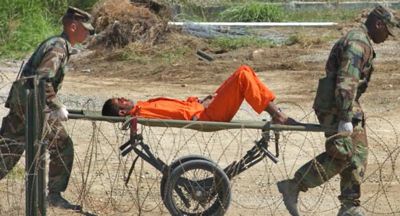
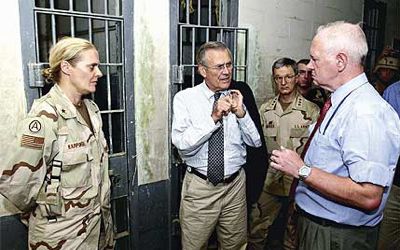
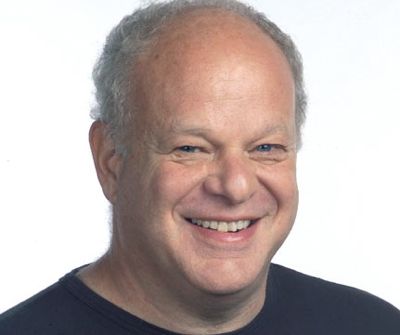

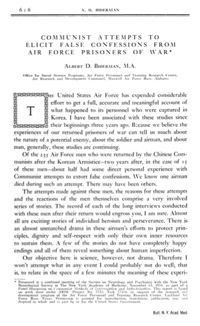
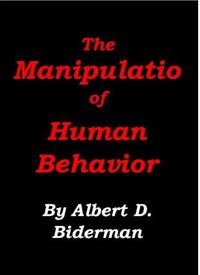
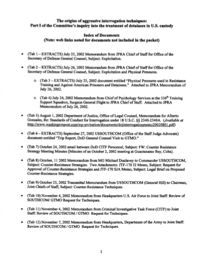



![[Most Recent Quotes from www.kitco.com]](http://www.kitconet.com/charts/metals/gold/t24_au_en_eukg_2.gif)
